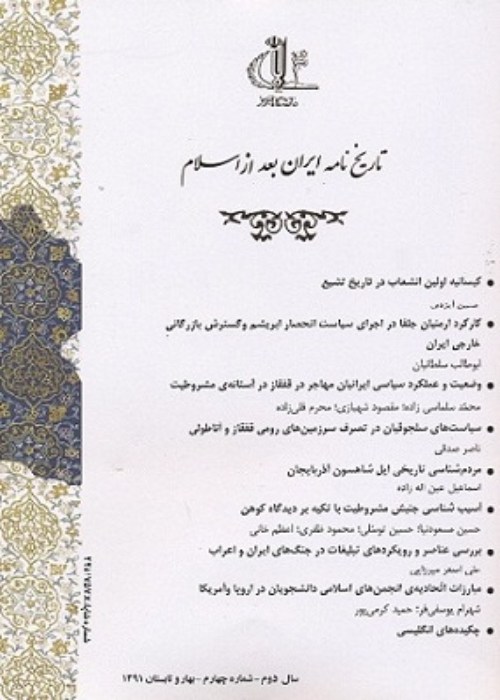Study of the Frequency and Types of Functions of Persian and Arabic Poetry in Seventh Century Persian Historical Texts
Ancient Persian historical texts, especially from the sixth century (AH) onwards, due to their subject matter, and also because of the use of elements and methods of literature in these texts, are in a combination of "historiography" and "literature". Among these, poetry, both Persian and Arabic, with two main types of functions, "news" and "array", has a significant presence in these texts, and the closeness of the two types; In the present study, citing finer and more precise classifications of types of poetry applications, the frequency of these types and their reasons in seven historical works of the seventh century (AH), including: Tarikh-e Tabarestan, Badaye al-azman fi vagayea-e Kerman (Tarikh-e Afzal), Egd al-ola, Tarikh-e Jahangosha, Mokhtasar-e Saljuknam (Tarikh-e Ibn-e Bibi), Tabaghat-e Naseri, and Nezam al-tavarikh, which belong to three types of historiography, "general", "local" and "dynastic", have been studied using a descriptive-analytical method, and examining library documents. The results of the research show that the function of poetry in these works is more literary and array than narrative and news. That is, writers have sought to use the power of poetry to emphasize the concept of "edification" rather than to present a poetic account of "historical news and narrative." One of the reasons for this is that the authors of these works belong to the Divan class and try as hard as they can to turn their works into works of art in accordance with the aesthetic criteria of the time. Among the three types of historiography, the volume and frequency of poetry use, regardless of its functions, is much more significant in both local and lineage types compared to general histories. At the end of the article, a table is prepared and presented that the reader can see the introduction and type of the historiography of each work, the frequency of testimonies, the number of verses used, the separation of Persian and Arabic verses and finally the types of poetic functions in the mentioned historical texts in the most concise form possible.
- حق عضویت دریافتی صرف حمایت از نشریات عضو و نگهداری، تکمیل و توسعه مگیران میشود.
- پرداخت حق اشتراک و دانلود مقالات اجازه بازنشر آن در سایر رسانههای چاپی و دیجیتال را به کاربر نمیدهد.



